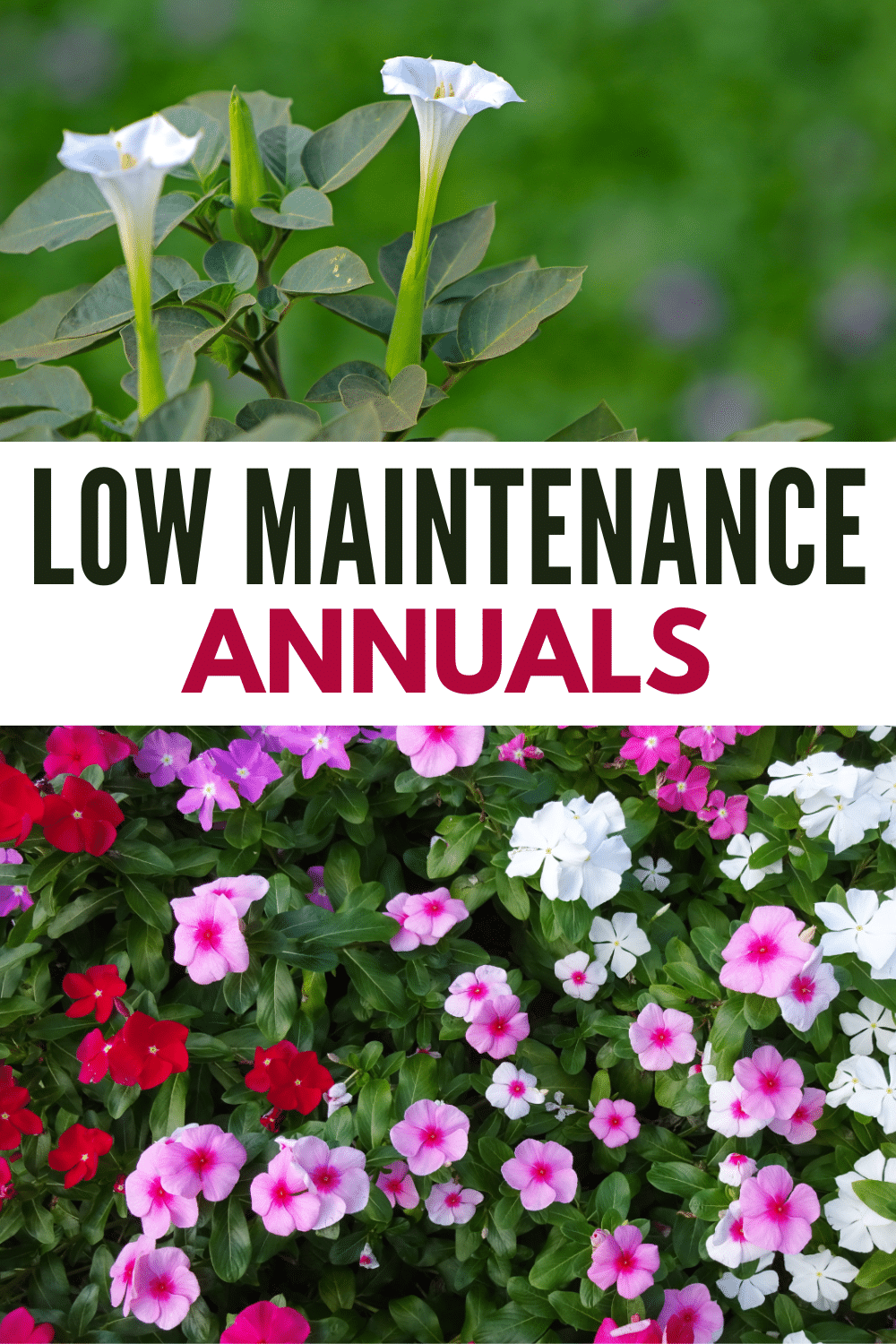These low maintenance annuals will transform your outdoor space into a colorful oasis. Check out our top picks!
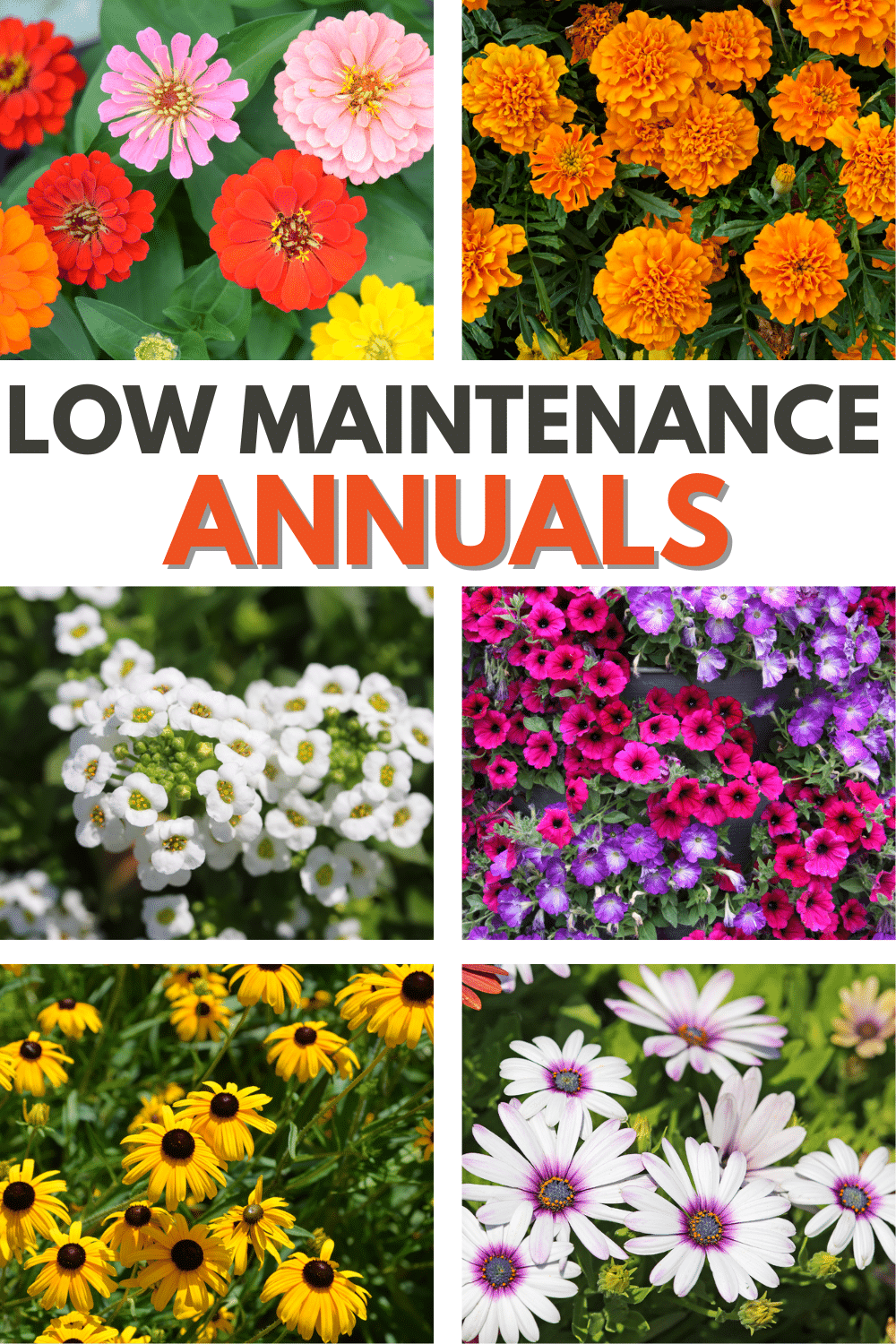
Jump to:
What Are Annual Flowers?
An annual flower is one that only blooms for a single season, and therefore must be replanted every year. Some annual plants tend to drop their seeds and therefore can be considered “reseeding annuals.”
Most annuals, however, are short-lived and survive only one gardening season and the following year. Nonetheless, summer annuals grow quickly, are easy to grow, and make an ideal addition to your garden beds for anyone living in an area where the gardening season is somewhat short.
So What Are Some Of The Best And Easiest To Grow Annuals In Your Flower Beds?
If you are looking for low maintenance annual flowers that add color to your garden all summer long, there are several options to consider. There are plenty of flowering annuals that are easy to care for and will continue to bloom without deadheading.
These flowers are easy to grow and bloom profusely during their lifespan. No matter what you’re looking for, you’ll find plenty of options below.
You’ll find flowering plants for full sun, part sun, or afternoon shade. I’ve also included both heat-loving blooms and cool-season flowers.
These all do well in containers too, so you don’t even have to mess with the other maintenance that comes with gardens and landscaping areas. That’s right, no weeding!
Here are the best annual flowers that require little maintenance and will add beauty to your landscape in summer and fall.
Marigolds Are A Great Addition
Marigolds are very easy to grow. There are several different varieties. The most common marigolds tend to be on the short side, growing only to 8 or 10 inches in height.
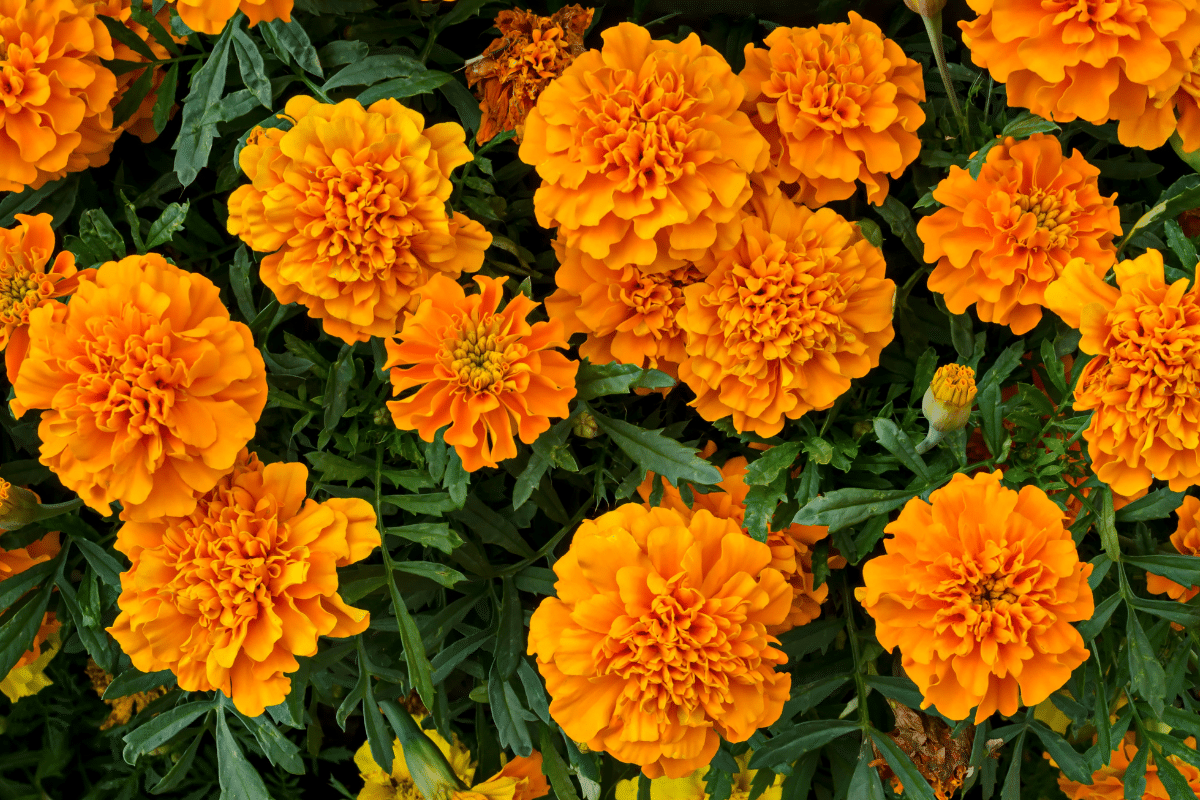
They come in orange, yellow, or a combination of orange and red. Giant marigolds have larger flower heads and grow more than twice as tall as the more traditional varieties.
Marigolds are often used as companion flowers and they are planted near tomatoes. They repel destructive insects from the tomato plants. They also make a nice border.
They do like full sun and well-drained soil so plan their placement accordingly.
Fun fact: The marigold flower meaning is joy and optimism. What better way to surround your home?
Impatiens Are Fragrant Flowers
Impatiens are very easy to grow. Although the New Guinea variety prefers hot and sunny conditions, the more familiar varieties of impatiens prefer shady conditions.
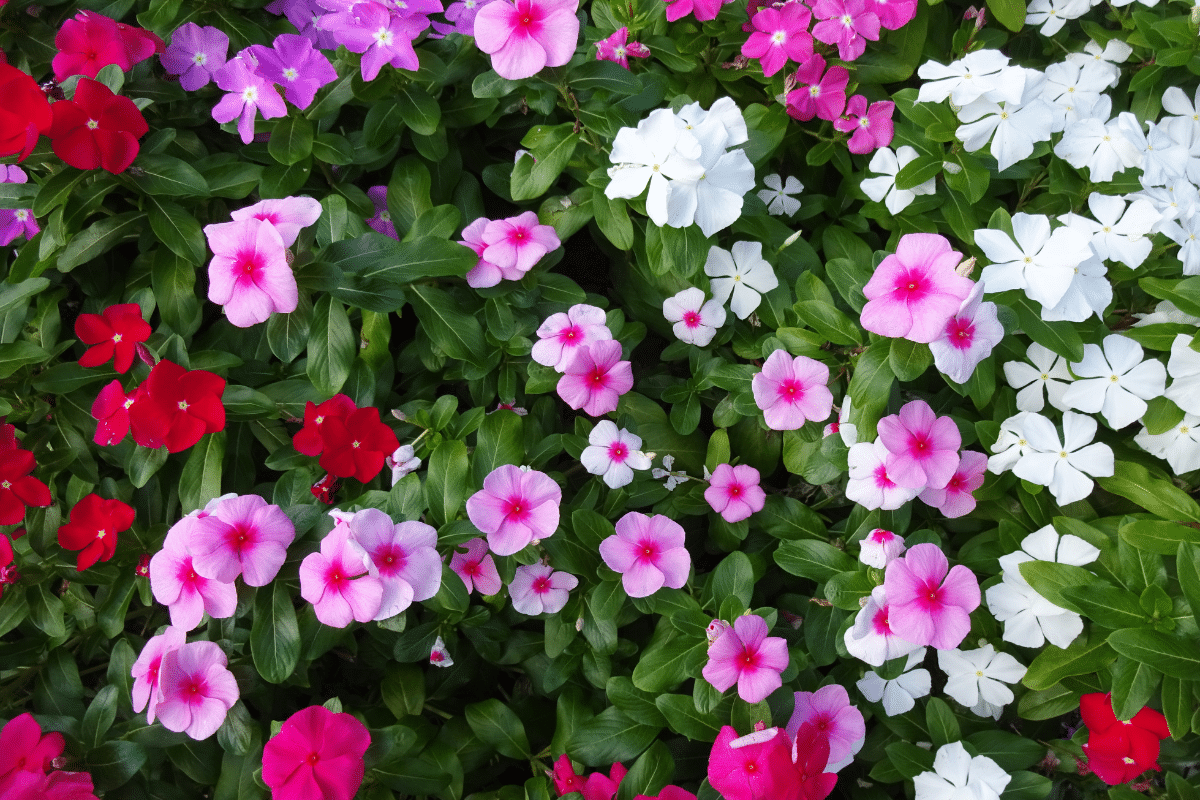
They are available in a variety of beautiful blooms ranging from a pale pink to a bright orange color and they are available with single or double blooms. The double impatiens look a bit like miniature roses.
Impatiens are a low-growing annual that spreads rapidly, so if it is planted in a mass, it will eventually spread to the point of creating a lush and colorful ground cover. They will grow from whenever the danger of frost has elapsed until the first frost arrives again. In warmer climates, they might even survive the entire year.
Pansies And Violas Are The Easiest Flowers To Grow
For cooler weather, pansies and violas are wonderful different colors of plants. They will grow well whether planted in pots or in the ground. They come in yellow and purple.
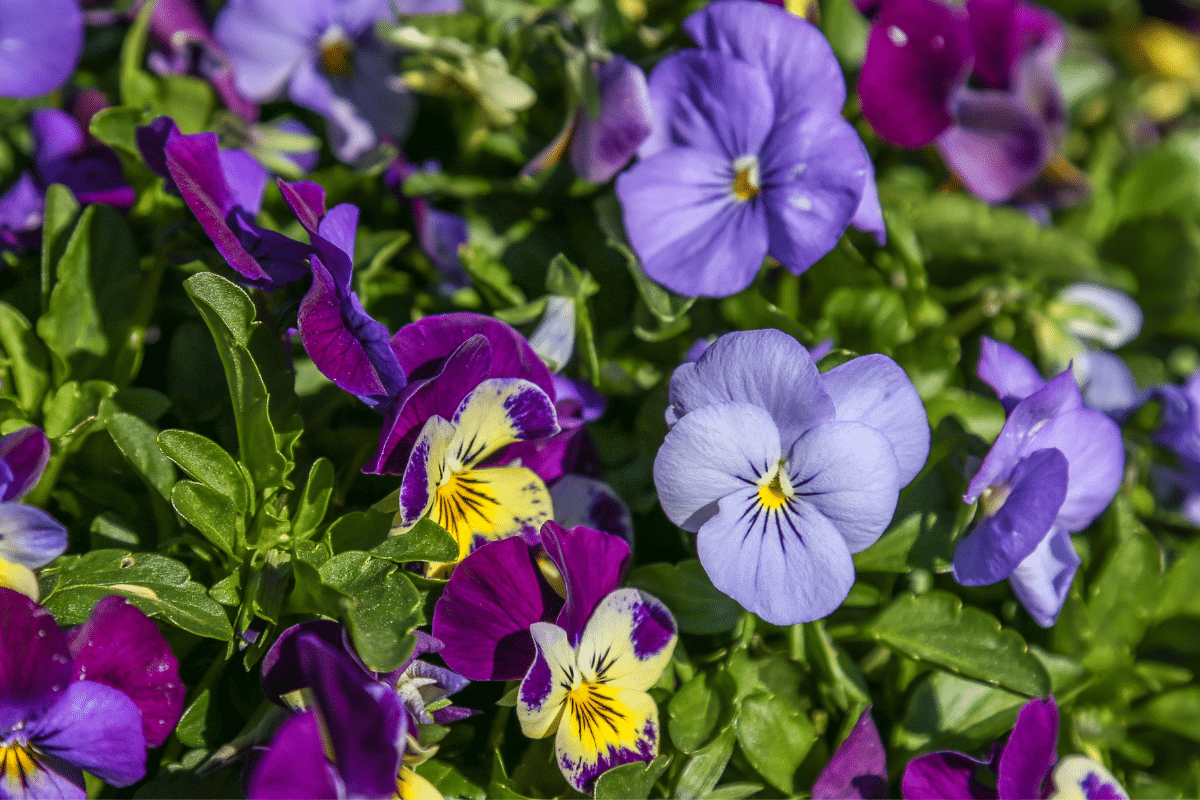
Since they are only suited to cooler weather, they will start to suffer and look wilted when the weather gets hotter. In warm southern areas, pansies are often planted in the winter.
Geraniums Are Low-Maintenance Flowers
Geraniums are very common annuals. They are easy to grow and will tolerate cool and warm weather. They can be grown in pots, in well-drained soil, or hanging baskets.
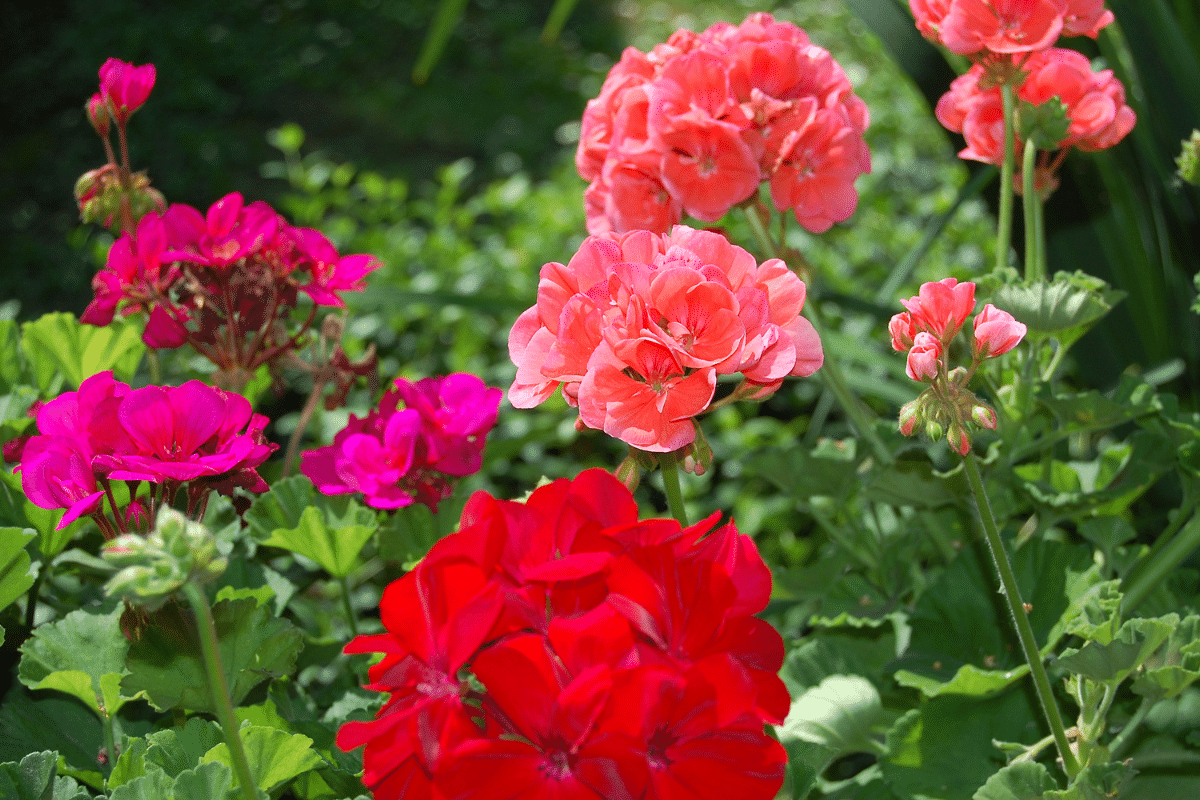
They also look wonderful in window boxes. Once the flowers have bloomed, they start to look somewhat shabby, so it is wise to remove the spent blooms since this will encourage new blooms to grow.
Geraniums come in a variety of colors, including pink, red, and orange. Geraniums tend to grow taller than impatiens, pansies, or marigolds.
Petunias Are Hardy Annuals
Petunias are very easy to grow and easily found. They too thrive in sunny conditions and can withstand warm temperatures.
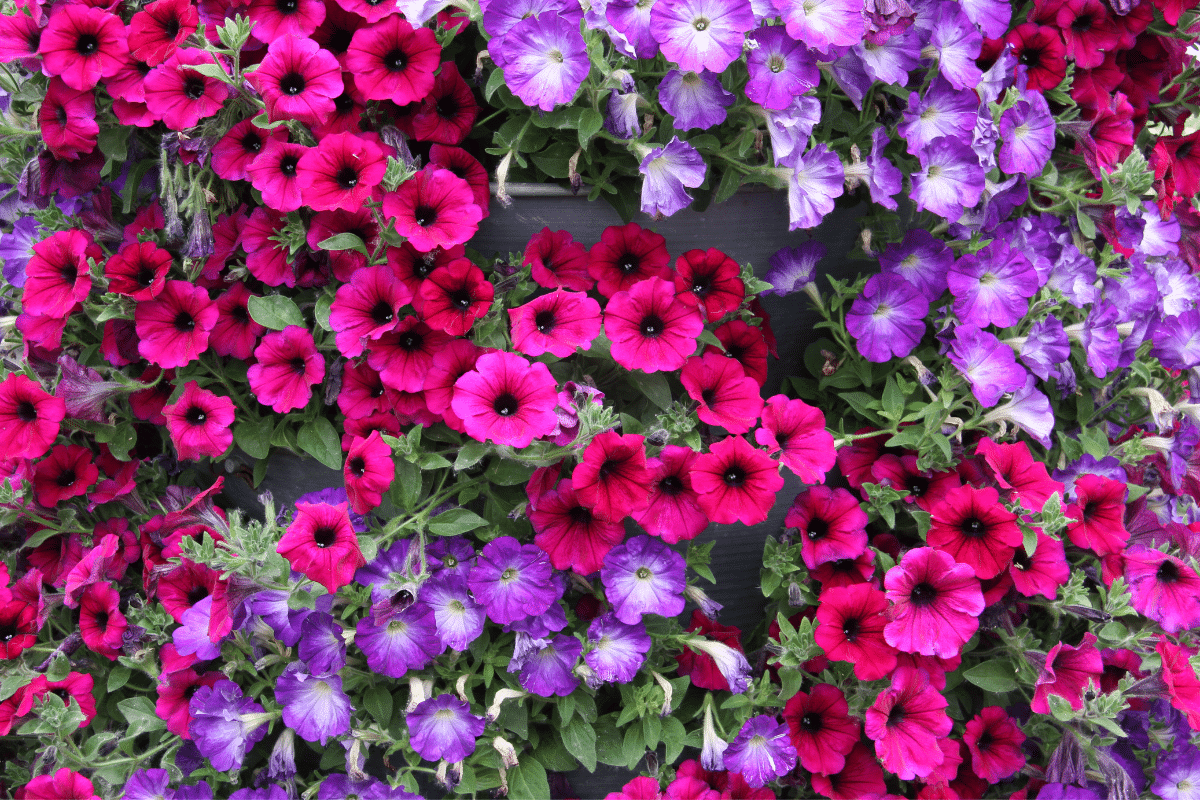
They are found in a host of colors ranging from pink to purple. It’s important to deadhead the spent flowers to encourage more blooms. There are also trailing varieties of petunias that are ideal for hanging baskets.
One of my favorite things about petunias is that they attract butterflies and hummingbirds! If you want to invite these beautiful flying creatures to your yard, fill it with petunias.
Begonias Are An Excellent Choice For A Beginner Gardener
Begonias are wonderful and easy-to-grow annuals so they’re perfect for someone just beginning to garden. The typical varieties have small flowers that come in red, pale pink, or hot pink, and the foliage can be green or red.
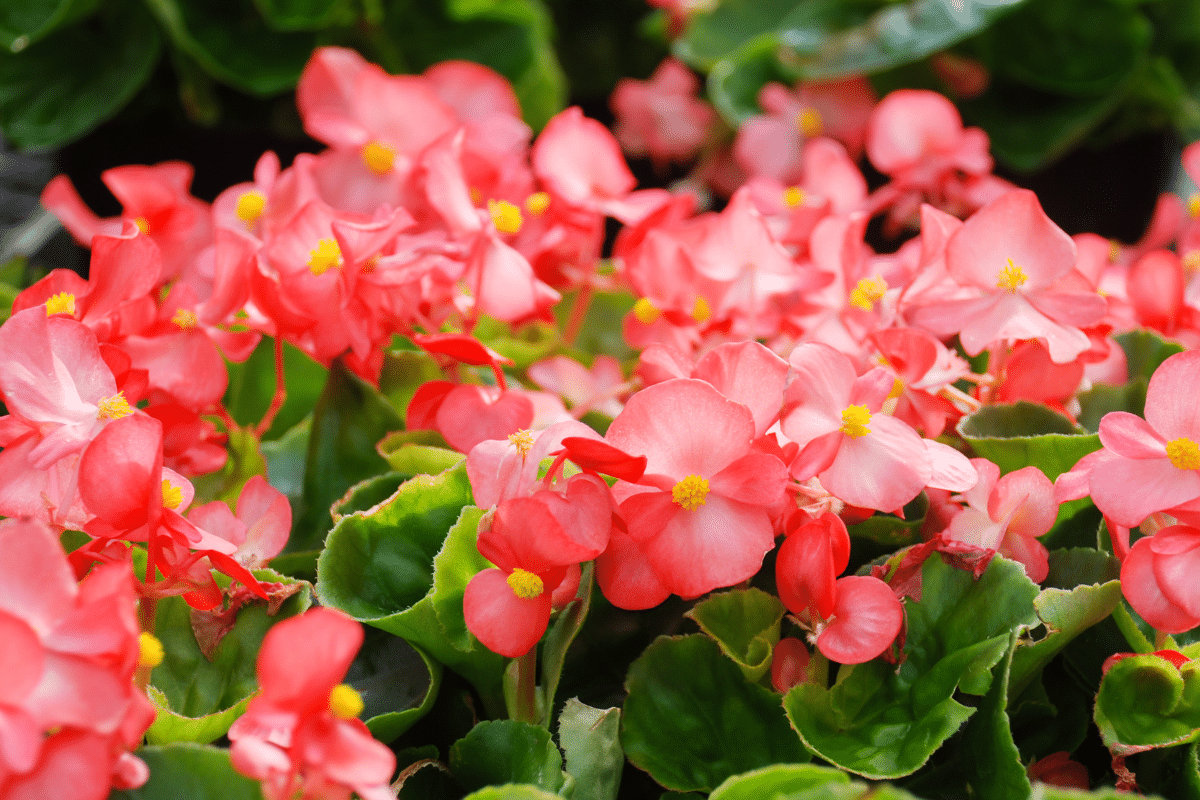
Typically, begonias don’t grow tall, but they do best when they are pinched back because this encourages them to grow bushier rather than tall. The non-stop or tuberous varieties have larger flowers and tend to grow taller.
Lobelia Is The Perfect Plant For A Container Garden
Lobelia is easy-to-grow annual that is best suited to hanging baskets, window boxes, or pots when used in combination with other things. It acts like a trailing ground cover of sorts.
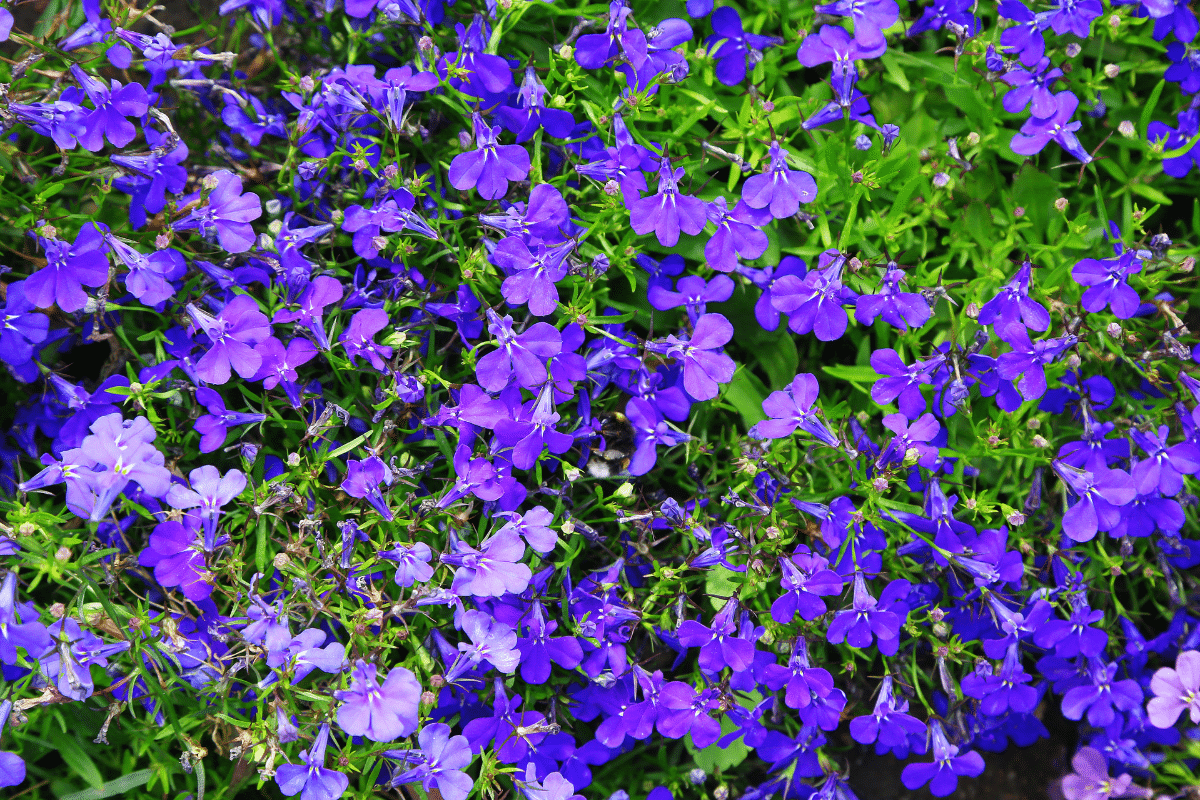
The flowers are very small but they do stand out and provide a wonderful contrast to the other things that are planted with them. Typically, lobelia comes in white, pale blue, and a deep blue that is almost purple.
Sweet Alyssums Are Easy Annual Flowers
Sweet alyssum is another very easy-to-grow annual. It isn’t a tall grower, but its small flowers are wonderful in pots, in window boxes or when planted in a bed mixed with other things.
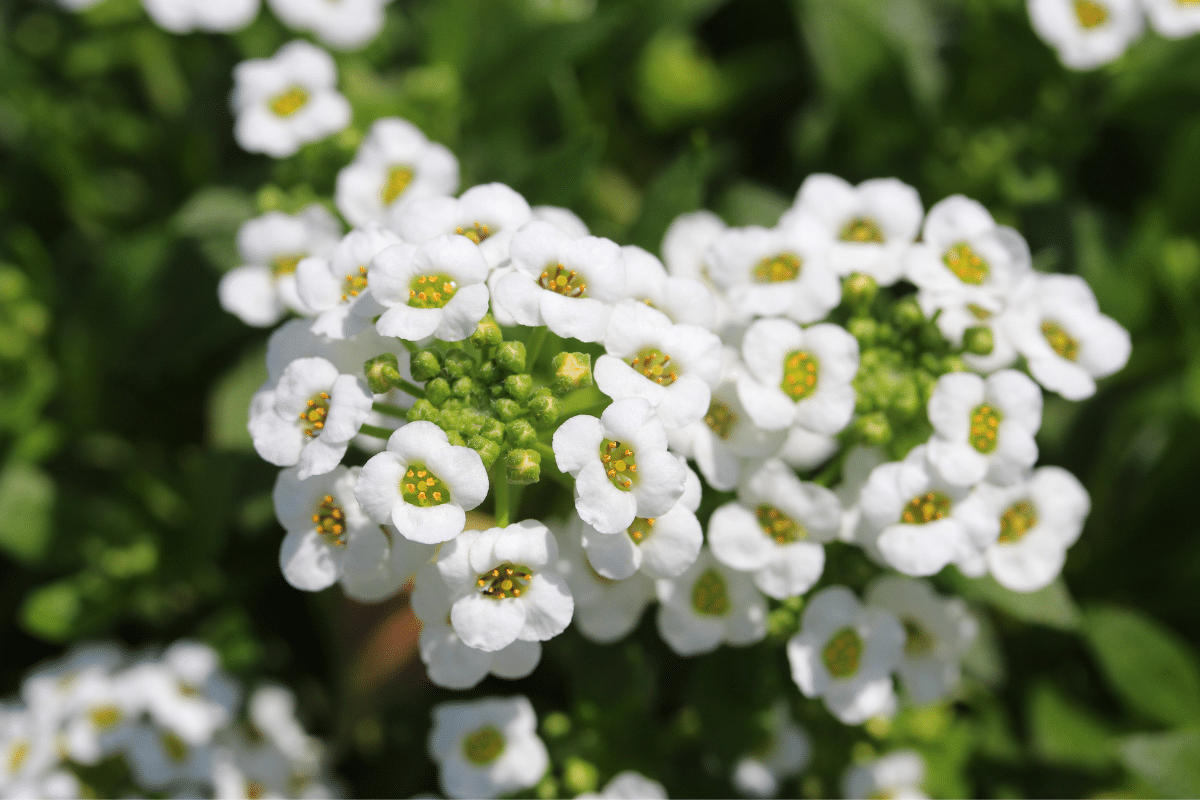
It prefers cooler weather so is prettiest in early spring and in the fall. If you live in a warmer climate where frost isn’t a concern, it can even bloom through winter.
Cosmos Are Low-Maintenance Plants
One of my favorite easy to grow annuals is Cosmos. There are many varieties of cosmos and they vary in height and color.
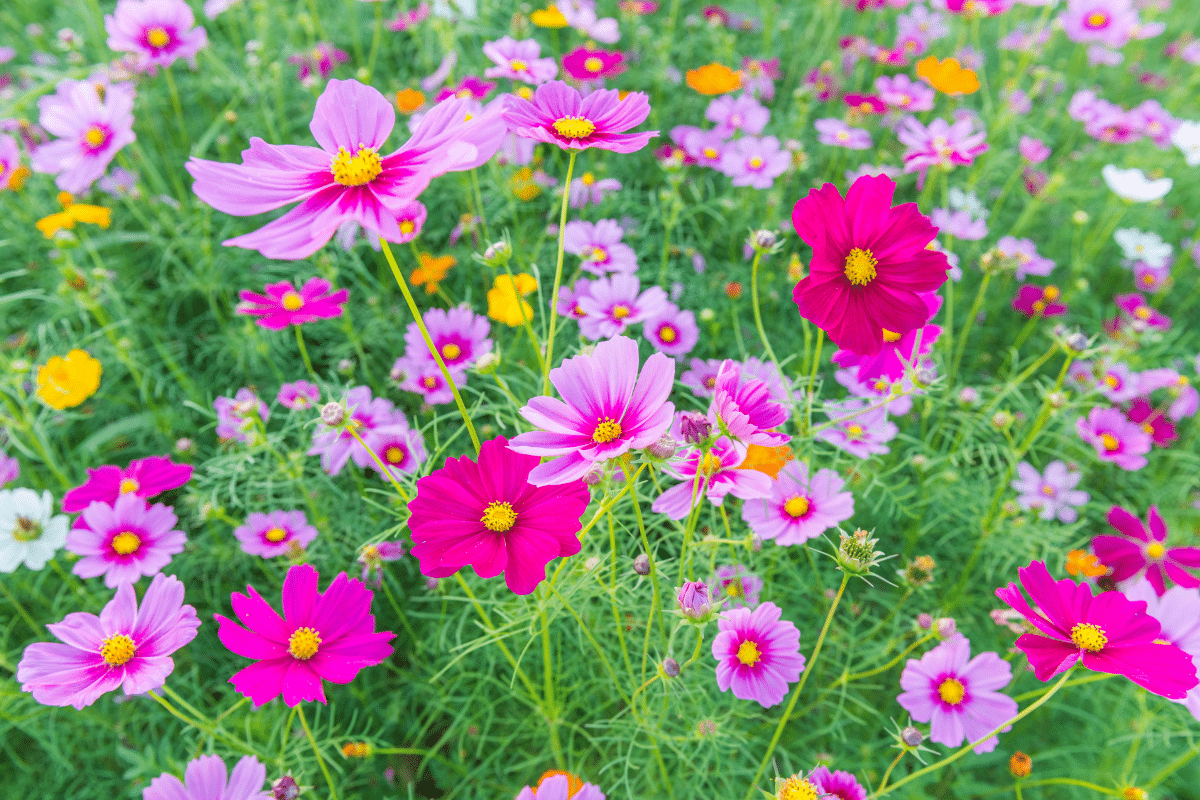
Some varieties even feature a mix of colors. On average, most cosmos grows anywhere from 1 feet to 3 feet tall. The flowers are about 2 to 3 inches in diameter.
Cosmos can be grown in the ground or containers, and it easily adapts to even the poorest soil conditions. It comes in single and double varieties, and the double click variety was only introduced within the last two or three years.
Zinnias And Their Wide Range Of Colors
Zinnias are another easy-to-grow annual. Zinnias come in a range of colors and sizes.
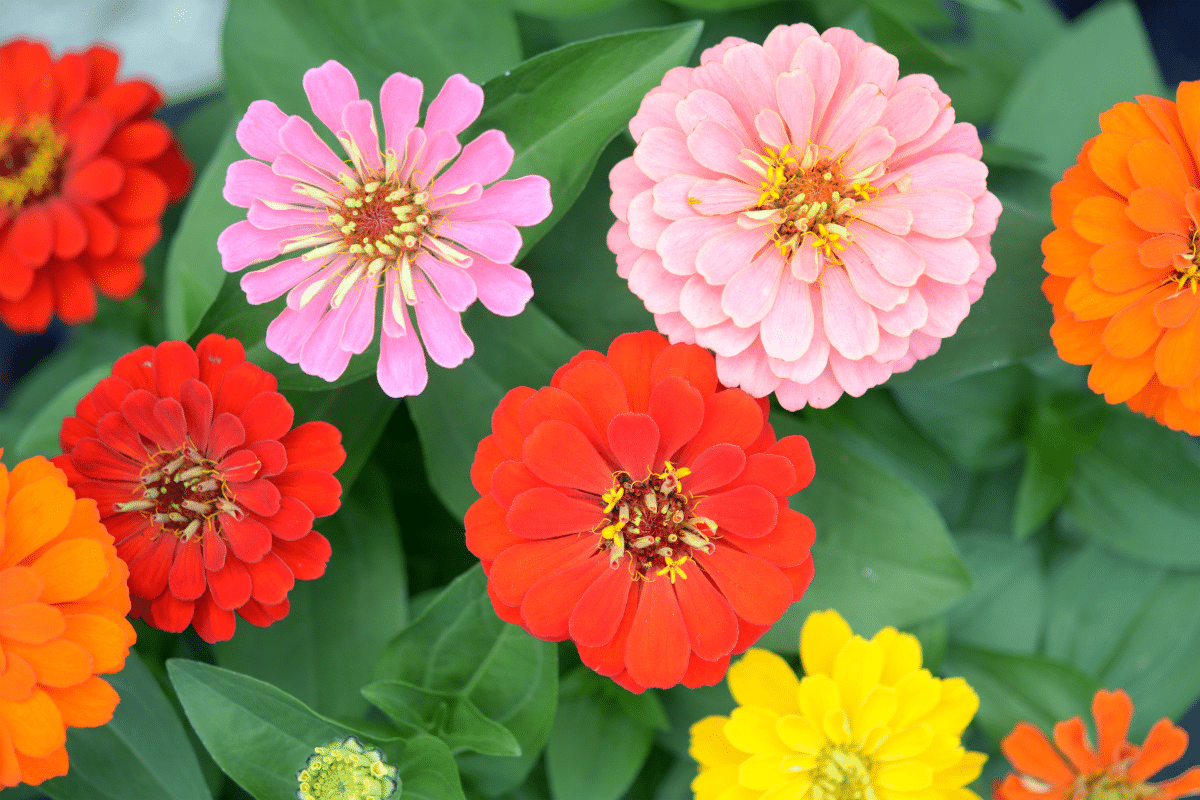
Lilliput is a small variety that grows no more than 10 or 12 inches in height. The flower heads are no more than an inch.
There are also giant varieties of zinnia, but the newest variety is something called “Profusion.” It was created to withstand very hot temperatures. It is extremely heat and drought resistant.
Blanket Flowers Are A Popular Choice
Blanket Flower or Galliarda is an annual that can easily be grown from seed in a sunny spot. In some parts of the country, it will grow as perennial plants or a reseeding annual.
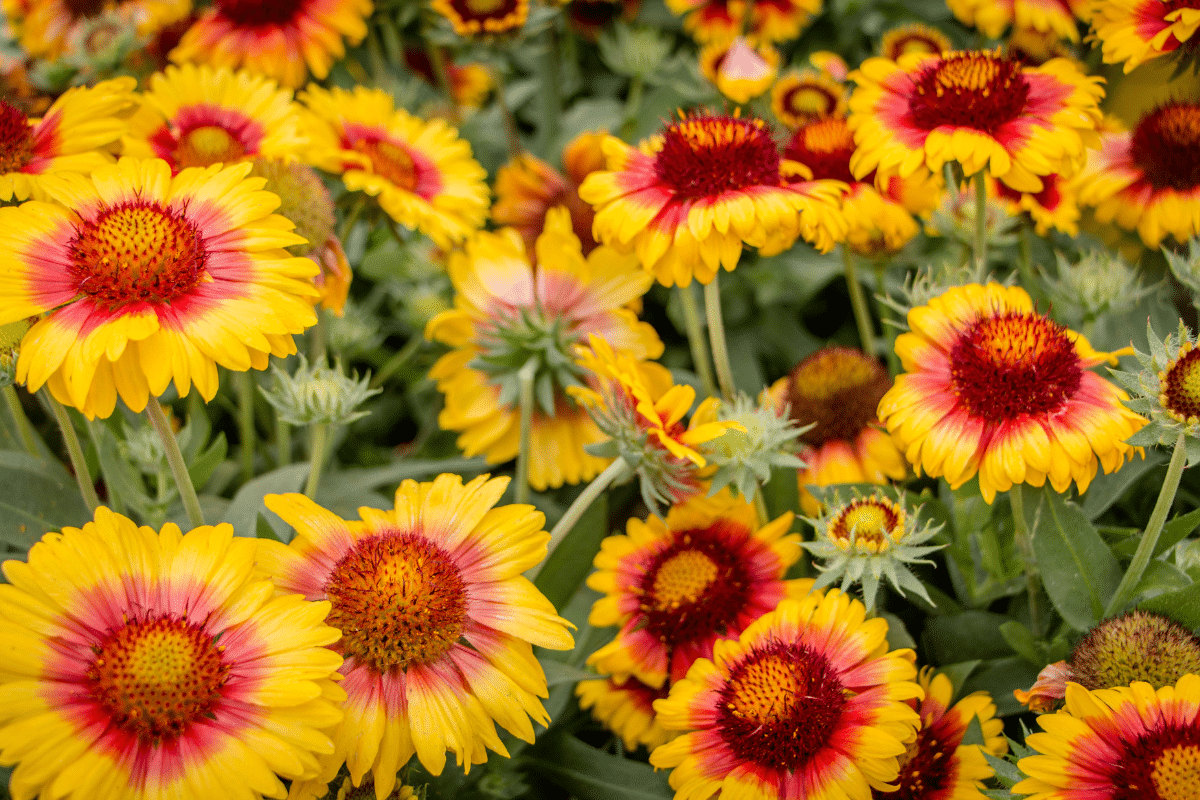
For me, it grows almost all year round. It favors cooler weather. It is a showy flower found in orange yellow and red (all in the same flower.) It thrives in full sun but is easily adaptable to other conditions. It will not tolerate drought well though.
African Daisy For Your Butterfly Garden
African daisy is an easy to grow annual that is found in bronze, red, yellow, white flowers, orange and pink. It is best suited to sunny conditions and grows to a height of one or two feet. One of its best assets is its ability to withstand high drought conditions.
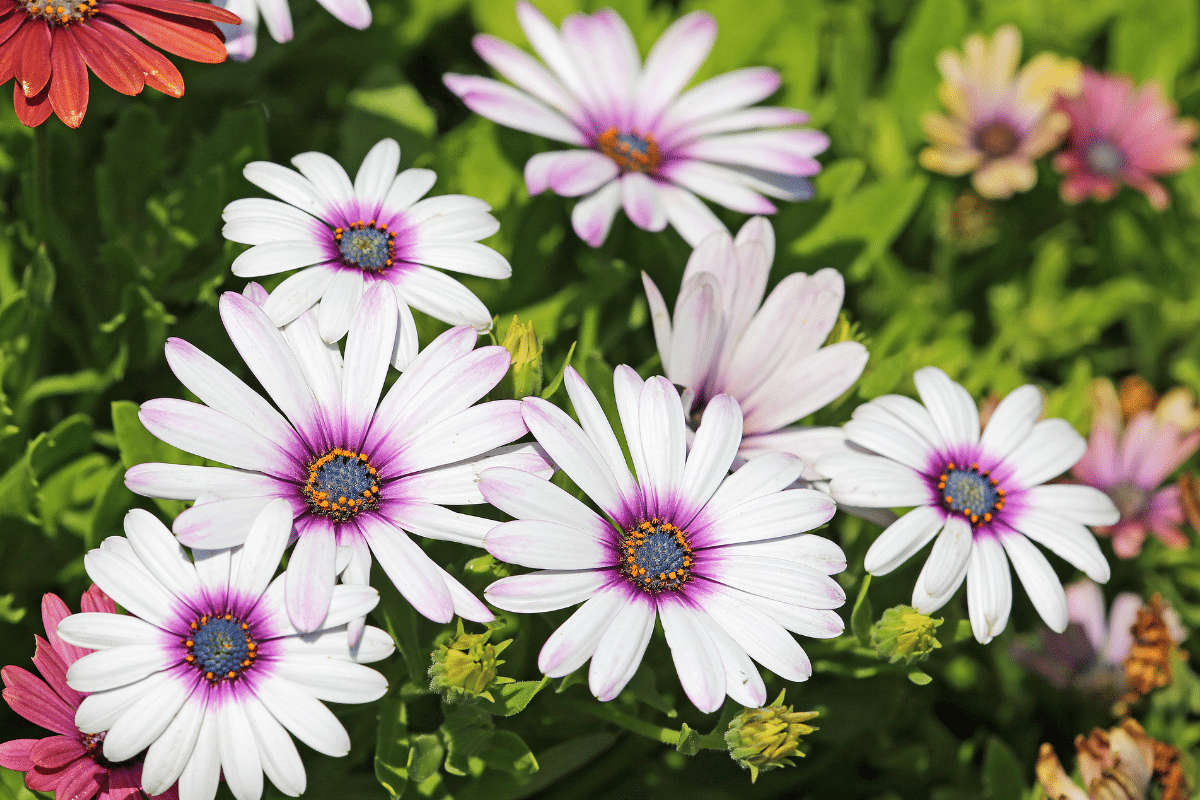
Gloriosa Daisy For A Pop Of Color
Gloriosa daisy is another easy to grow annual. A relative of Black-Eyed Susan, it is typically found in orange red, and yellow.
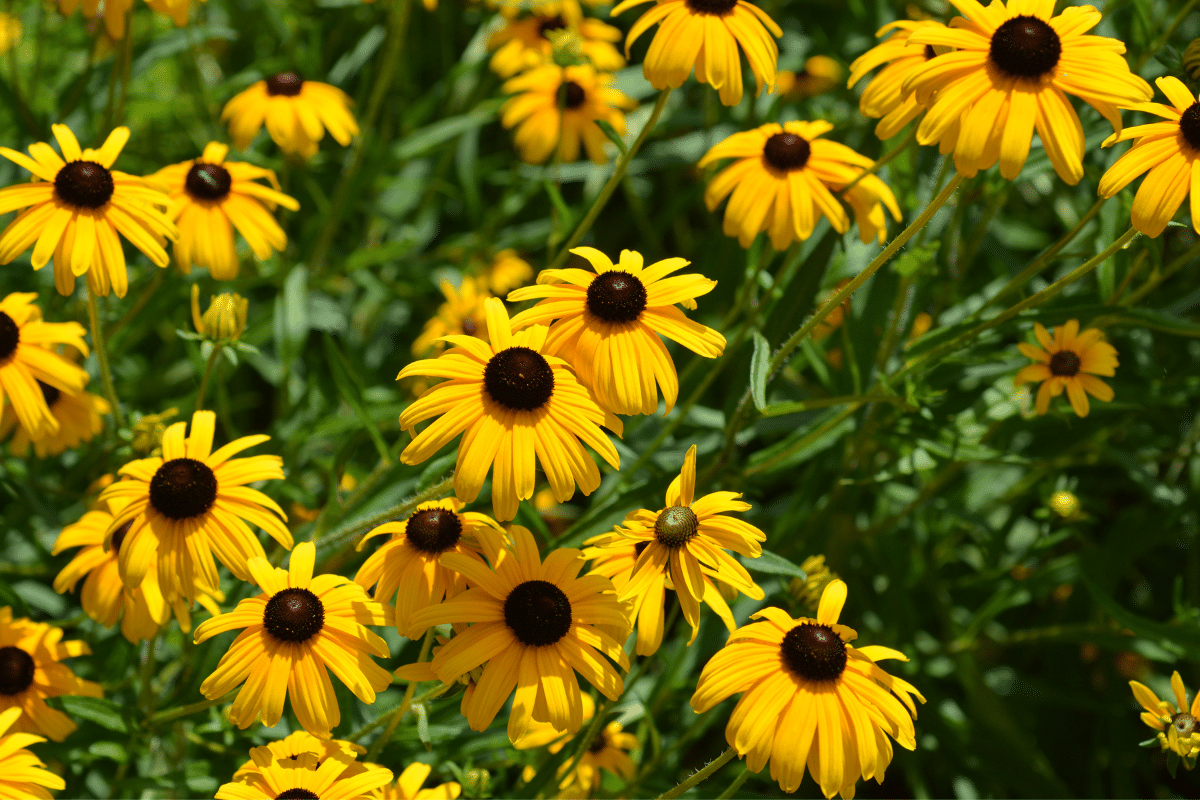
The tall stems grows to a height of 24 to 30 inches and will do best in sun or partial shade. It is less drought tolerant than African daisies, however.
Datura Is The Perfect Choice
Another easy-to-grow annual with colorful flowers is Datura. It is highly toxic but the flowers are magnificent huge trumpet-like flowers that open after dusk and are often very fragrant.
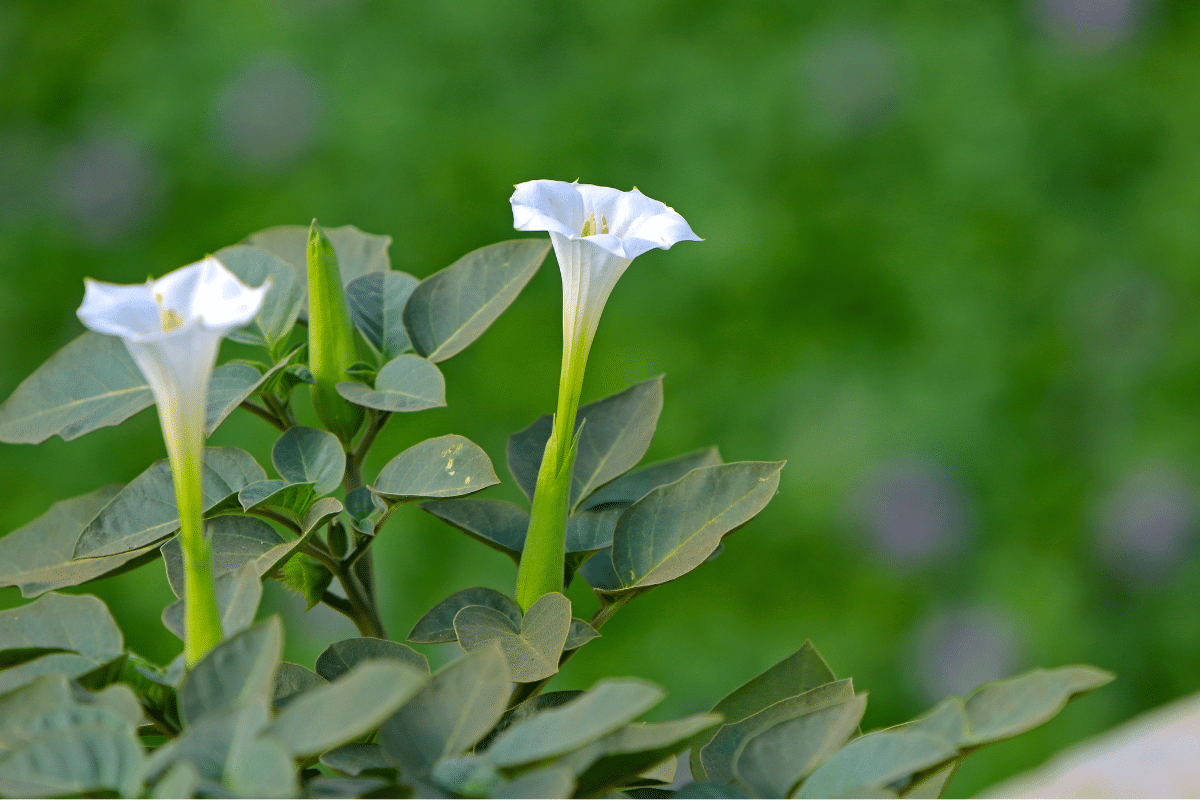
They only last until daylight, but the flowers are truly spectacular. They are extremely easy to grow by seed and once the flower has died, a seed pod will develop where the flower was.
A mature seed pod will be about the size of a walnut in a shell, but it is covered with sharp thorns. As the pod matures, it dries out, eventually bursting open.
It isn’t unusual for seeds to drop onto the ground and sprout, so although it is an annual, it easily reseeds itself. It prefers full sun and summer heat but is quite adaptable.
Four O’clock With Their Bright Colors
Four o’clock is another easy to grow annual. Although it typically only grows to about 2 feet in height, I have personally seen it grow at least 5 feet.
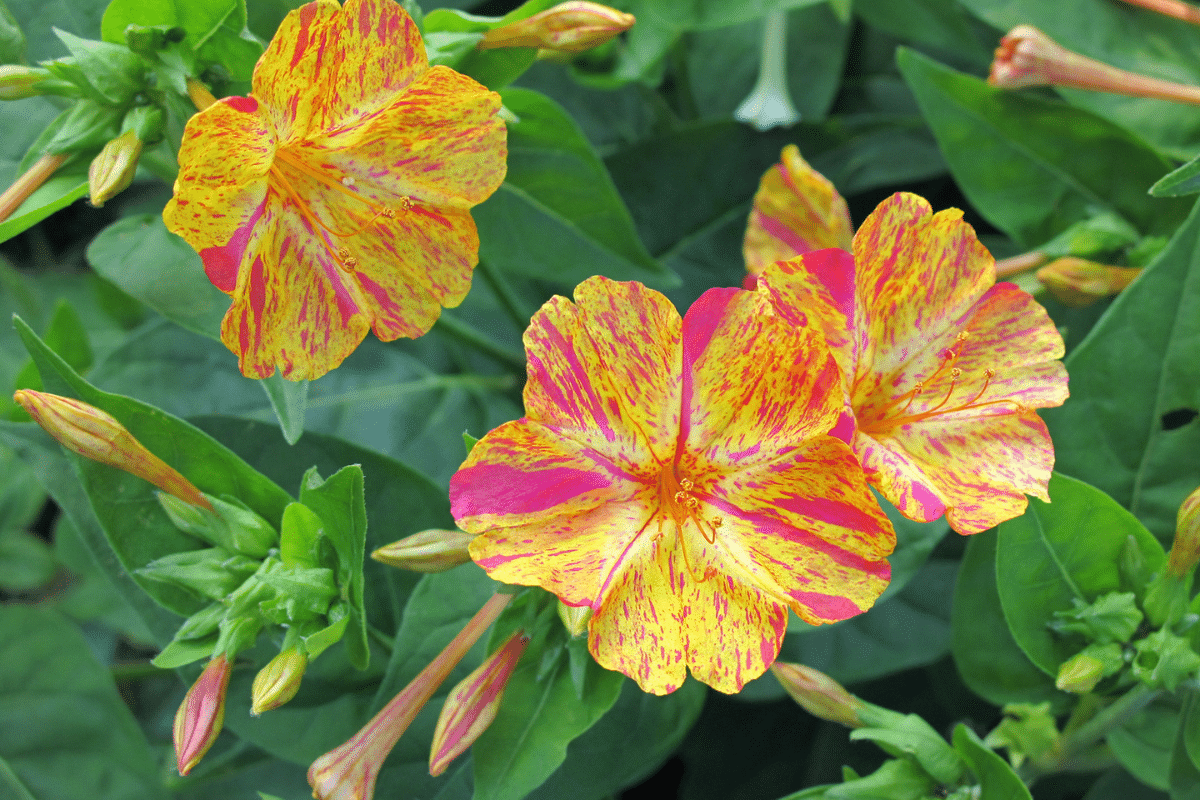
It produces many bold colored flowers on a single stem and as with Datura the flowers only open at dusk. Once the flower dies, a seed develops.
Four o’clock is a big seed producer, and the seeds drop and sprout very easily. In warm climates, four o’clock will produce tubers as it grows. These large tubers will spread deeply into the ground.
Because of how four o’clock can spread and sprout from seeds, it is best to plant this annual in a place where it can be contained. It can and will become invasive.
This is only a small listing of true annuals that I like to grow and are low maintenance. Many more annuals are worth the effort to grow. I’ve tried to list some of the common easy-to-find ones as well as some that are more unusual but equally fun to grow.
As a gardener, we derive the deepest satisfaction from watching the things we plant from seed grow into mature plants with minimal effort. We take great pleasure in watching our new flowers bloom continuously, and sometimes, we will even take the time to bring a bit of the outside inside by picking a small bouquet that we’ve grown ourselves.
Low Maintenance Annuals FAQs
They’re perfect for beginners or those with limited gardening time.
They provide quick and vibrant colors to your garden.
They’re often less susceptible to pests and diseases.
Water regularly, especially during dry periods.
Use a slow-release fertilizer at planting time.
Deadhead spent flowers to encourage more blooms (for some species).
While they’re less demanding, slow-release fertilizer at the time of planting can help. Some gardeners might choose to add a water-soluble fertilizer every few weeks for prolific bloomers.
Absolutely! They’re often perfect for container gardening. Just ensure good drainage in the pots.
Many low-maintenance annuals are drought-tolerant once established, but it varies by species. For instance, zinnias and cosmos can tolerate some drought.
Yes! Many low-maintenance annuals are excellent for attracting bees, butterflies, and other pollinators. Marigolds, zinnias, and sunflowers, for example, are popular with many pollinators.
When selecting annuals to plant in your garden, it’s always a good idea to visit your local nurseries or speak with local gardening experts or your gardener friends to get recommendations tailored to your specific region and garden conditions.

